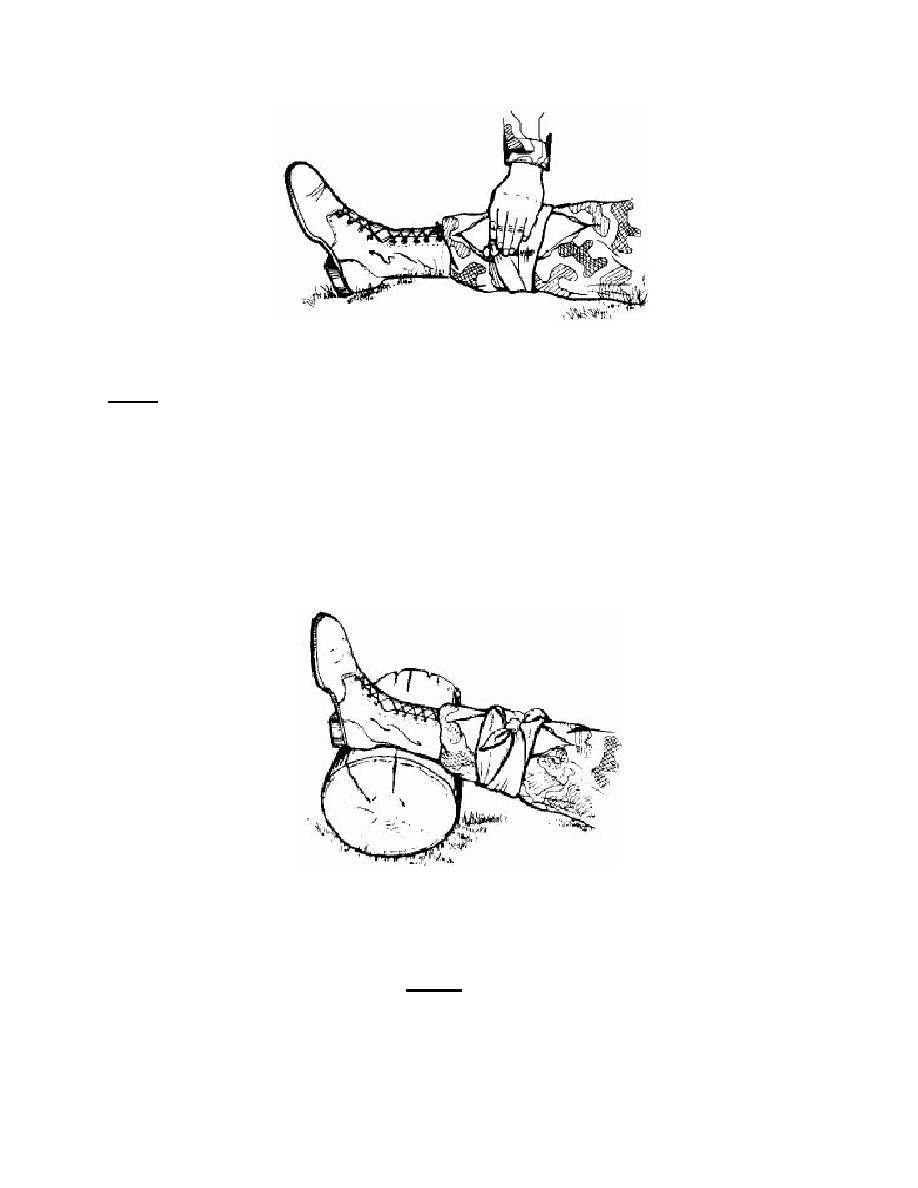
Figure 5-8. Applying manual pressure.
NOTE:
If the casualty is conscious and can follow instructions, you can have him
apply the manual pressure himself.
5-5.
ELEVATING THE INJURED LIMB
Elevate the injured limb above the level of the casualty's heart to decrease the
bleeding. An injured leg can be raised by placing the foot and ankle on a stable object,
such as a pack, log, or rock (figure 5-9). An injured forearm can be elevated by placing
the forearm on the casualty's chest if he is lying on his back or by having the casualty
place his arm on top of his head if he is sitting. Elevating the injured limb and applying
manual pressure should be done at the same time when no fracture is involved.
Figure 5-9. Elevating an injured limb.
CAUTION:
Examine the injured extremity for fractures (visible broken bone,
deformity of the limb, and so forth) before elevating the limb. If a
fracture is suspected, do not elevate the wound until the limb has been
properly splinted.
IS0871
5-8



 Previous Page
Previous Page
